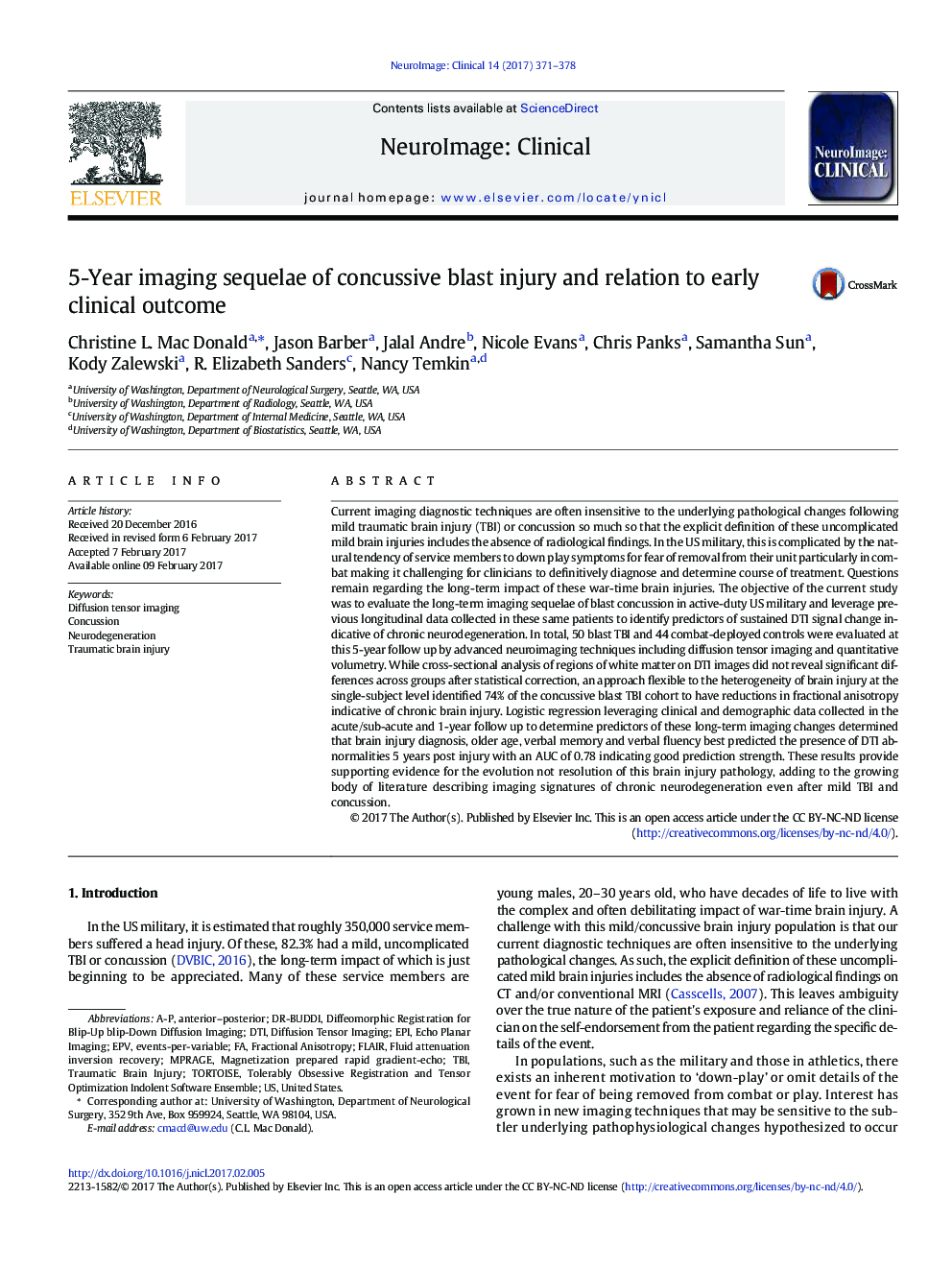| کد مقاله | کد نشریه | سال انتشار | مقاله انگلیسی | نسخه تمام متن |
|---|---|---|---|---|
| 8688682 | 1580953 | 2017 | 8 صفحه PDF | دانلود رایگان |
عنوان انگلیسی مقاله ISI
5-Year imaging sequelae of concussive blast injury and relation to early clinical outcome
ترجمه فارسی عنوان
عواقب تصویربرداری 5 ساله از آسیب انفجار مختصر و ارتباط با نتایج اولیه بالینی
دانلود مقاله + سفارش ترجمه
دانلود مقاله ISI انگلیسی
رایگان برای ایرانیان
کلمات کلیدی
EPVTBIA-PDTIMPRAGEEPITraumatic brain injury - آسیب تروماتیک مغزFLAIR - اشتباهUnited States - ایالات متحده آمریکاfluid attenuation inversion recovery - بازیابی معکوس کاهش مایعecho planar imaging - تصویر برداری اکو فلاریdiffusion tensor imaging - تصویربرداری تانسور انتشارNeurodegeneration - تولید نوروژنیکConcussion - تکان مغزیanterior–posterior - قدامی-خلفیTortoise - لاک پشتfractional anisotropy - ناپیوستگی کسری
موضوعات مرتبط
علوم زیستی و بیوفناوری
علم عصب شناسی
روانپزشکی بیولوژیکی
چکیده انگلیسی
Current imaging diagnostic techniques are often insensitive to the underlying pathological changes following mild traumatic brain injury (TBI) or concussion so much so that the explicit definition of these uncomplicated mild brain injuries includes the absence of radiological findings. In the US military, this is complicated by the natural tendency of service members to down play symptoms for fear of removal from their unit particularly in combat making it challenging for clinicians to definitively diagnose and determine course of treatment. Questions remain regarding the long-term impact of these war-time brain injuries. The objective of the current study was to evaluate the long-term imaging sequelae of blast concussion in active-duty US military and leverage previous longitudinal data collected in these same patients to identify predictors of sustained DTI signal change indicative of chronic neurodegeneration. In total, 50 blast TBI and 44 combat-deployed controls were evaluated at this 5-year follow up by advanced neuroimaging techniques including diffusion tensor imaging and quantitative volumetry. While cross-sectional analysis of regions of white matter on DTI images did not reveal significant differences across groups after statistical correction, an approach flexible to the heterogeneity of brain injury at the single-subject level identified 74% of the concussive blast TBI cohort to have reductions in fractional anisotropy indicative of chronic brain injury. Logistic regression leveraging clinical and demographic data collected in the acute/sub-acute and 1-year follow up to determine predictors of these long-term imaging changes determined that brain injury diagnosis, older age, verbal memory and verbal fluency best predicted the presence of DTI abnormalities 5Â years post injury with an AUC of 0.78 indicating good prediction strength. These results provide supporting evidence for the evolution not resolution of this brain injury pathology, adding to the growing body of literature describing imaging signatures of chronic neurodegeneration even after mild TBI and concussion.
ناشر
Database: Elsevier - ScienceDirect (ساینس دایرکت)
Journal: NeuroImage: Clinical - Volume 14, 2017, Pages 371-378
Journal: NeuroImage: Clinical - Volume 14, 2017, Pages 371-378
نویسندگان
Christine L. Mac Donald, Jason Barber, Jalal Andre, Nicole Evans, Chris Panks, Samantha Sun, Kody Zalewski, R. Elizabeth Sanders, Nancy Temkin,
